Monday, December 10, 2012



December 10 - The Passover, A Great Symbol of the Atonement
The lambs blood marking the Israelites’ doorposts was the only way for them to be saved from the angel of death. Jesus Christ, the Lamb of God is the only way by which we can be saved from physical and spiritual death.
It is significant to remember at Christmastime that Jesus, the Lamb of God, was born in a stable around the same time as the lambs that would be used for sacrifice in the temple at Passover time.
Show OT Stories, p. 66-70. When Moses was called as a prophet, the Israelites were slaves in Egypt. They were forced to build cities for the Pharaoh. Life was extremely hard for them and they were not free to do what they wanted. Moses plead with Pharaoh many times to release the children of Israel, but Pharaoh refused. Moses told Pharaoh, “Thus saith the Lord, Israel is my son, even my firstborn: …Let my son go, that he may serve me” (Exodus 4:22-23). God sent plagues to the land of Egypt and its people (like frogs, boils on their skin, lice, bugs, etc.), but Pharaoh continued to harden his heart. The Lord then sent one last plague to Egypt: that all the firstborn in the land of Egypt would die. To protect His covenant people, God commanded every household of Israel to find a male lamb without blemish. They had to kill the lamb without breaking any bones, take its blood and paint on the two side posts and above the door of their home so that the angel of death would pass over their home. Everyone whose door was painted with blood was saved.
The Jews celebrated the Passover every year after their escape from Egypt. They ate symbolic foods like bitter herbs, reminding them of the bitter life in Egypt, unleavened bread, reminding them of the haste of preparation, which did not allow enough time for bread dough to rise. They also ate lamb in remembrance of the lamb whose blood marked the doorways of their homes. The Passover commemorates the passage of a people from subjection and bondage to freedom and deliverance.
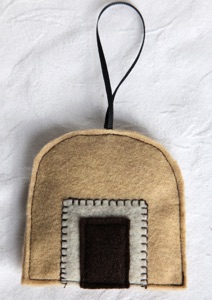
Timeline: c. 1450 B.C.
Opening Song: Christmas Bells, Children’s Songbook 54
Have the children ring bells while singing.
Ornament: Passover door
I sewed the above ornament from felt. My friend Julie sewed a similar one from felt (left).
Show GAK 227, 230, 233. Shortly after the Passover meal, Jesus became the Great and Last Sacrifice. He suffered for our sins in Gethsemane, died on the cross, and rose again the third day. By becoming the Passover Lamb, He fulfilled the ancient law of Moses. “No more would men be required to offer the firstborn lamb from their flock, because the Firstborn of God had come to offer himself as an ‘infinite and eternal sacrifice.’ This is the majesty of the Atonement and Resurrection, not just a passover from death, but a gift of eternal life by an infinite sacrifice” (“Christ, Our Passover”, Howard W. Hunter, April 1985 General Conference).

Show The Last Supper. Jesus’ last supper was the Passover meal. Nearly fifteen hundred years after the first Passover in Egypt, Jesus sat down with his disciples in an upper room in Jerusalem. After eating the sacrificial lamb from the Passover feast, Jesus instituted the sacrament, teaching them that the bread symbolized his body and the water, his blood.


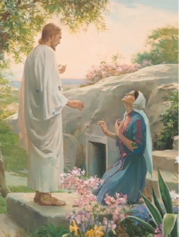
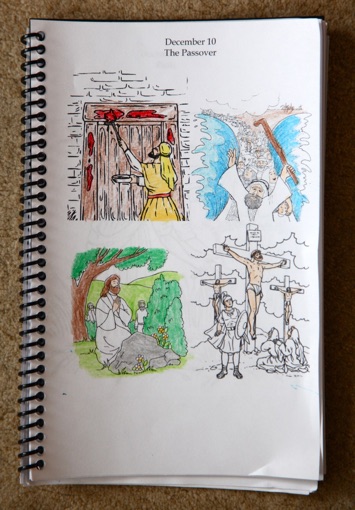
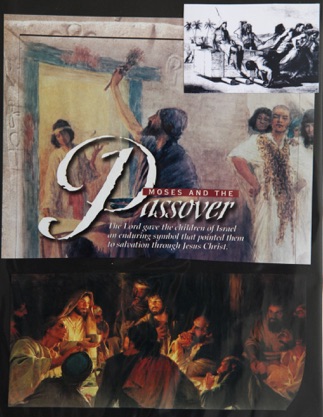
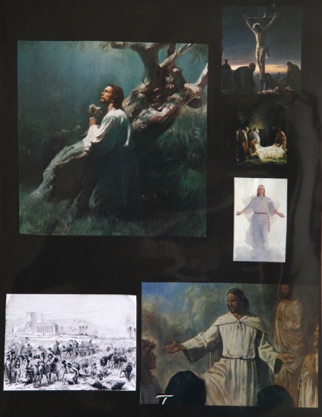
The Passover feast day was the day of liberation. On the same day that the Jews celebrated Pharaoh’s release of the Israelites from their captivity, the Savior declared liberty to the captives in the spirit prison after their long period of spiritual bondage. Then, after His resurrection, when Jesus appeared to the Nephites, He said:
“Behold, I say unto you that the law is fulfilled that was given unto Moses. Behold, I am he that gave the law, and I am he who covenanted with my people Israel; therefore, the law in me is fulfilled, for I have come to fulfil the law; therefore it hath an end. ...For behold, the covenant which I have made with my people is not all fulfilled; but the law which was given unto Moses hath an end in me. Behold, I am the law, and the light. Look unto me, and endure to the end, and ye shall live; for unto him that endureth to the end will I give eternal life. Behold, I have given unto you the commandments; therefore keep my commandments. And this is the law and the prophets, for they truly testified of me” 3 Nephi 15:4-5, 8-10.
Jesus Christ is the Lamb of God – a male without blemish or broken bone. He was perfect. He was the Firstborn of God in the pre-mortal existence, and was slain just like the firstborn of Egypt. Because of his sacrifice, we can live eternally with Him and our families. At Christmastime, we remember that the Lamb of God, in accordance with His mission, was born in a humble stable around the same time as the lambs that would be used for sacrifice in the temple at the Passover.
Closing Song: “Far, Far Away on Judea’s Plains” Hymns, 212
Complete Devotionals HERE.
Watch “The Passover” (3:35) or teach (next 2 paragraphs):
